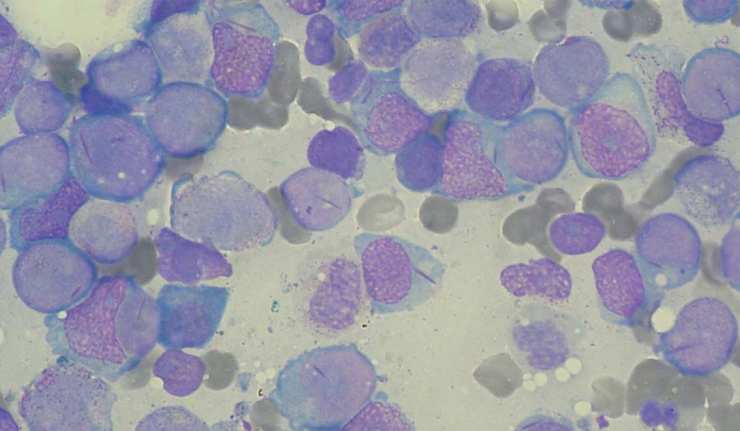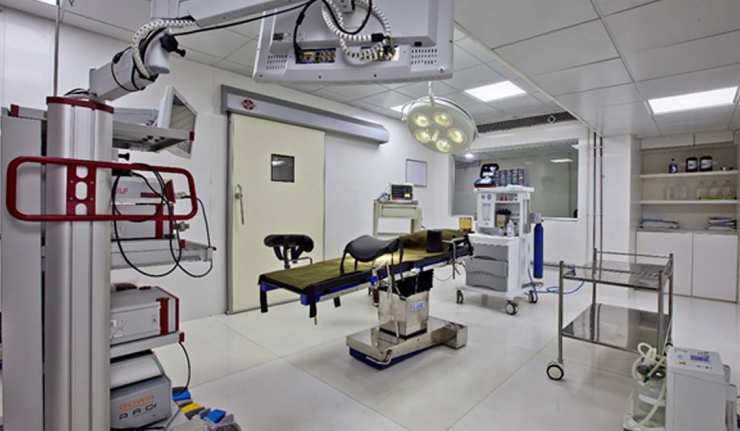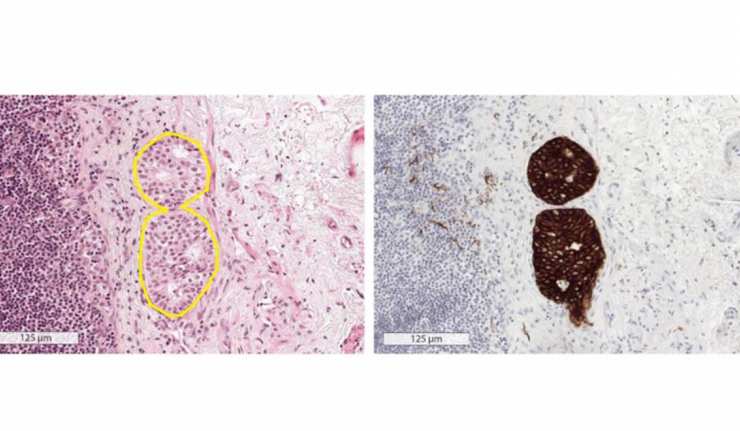AI
Ezra: AI Can Now Detect Cancer in an Intelligent Way
“The most important shot is the next one.”
One in three people will get cancer in their lifetimes, and over half of them will be detected late. Only 20 percent of those with late-stage cancer survive longer than five years. 2.5 percent of men will die of prostate cancer. In addition, the present solutions for cancer have dangerous effects like intense pain, urinary trouble, infections, and erectile dysfunction, among others.
The Future of Artificial Intelligence: Top Ways It Will Impact Everyday Life
Technology has advanced far and wide over the years, and artificial intelligence (AI) is no longer a tale that is yet to be unfolded. For example, operating the internet is proof that AI has come so far as to gratify most of our needs. By looking at the rate at which technological advancements are gaining the attention of the masses, it is safe to say that the future of AI is rather very bright.
Here are some ways in which this technology could affect everyday life in the years to come:
AI Will Impact and Disrupt the Real Estate Industry in a Big Way
Previously, artificial intelligence (AI) was only limited to technology and huge corporations, but now it has proven to be a valuable asset in health, medicine, finance, eCommerce, and a variety of other industries. Also, AI can now be accessed even by small businesses and individuals.
New and Improved Model for the Genetics of Mental Health Disorders Developed
Conditions such as schizophrenia and autism can be difficult to treat and manage, over a lifetime. This may be because scientists' understanding of these conditions has been incomplete, i.e., the treatment could have been unsatisfactory or less than effective for certain patients. On the other hand, researchers working in this area have made progress in leaps and bounds in the last few years.
Artificial Intelligence Software Can Now Recognize Galaxies
ClaRAN was created by a big data specialist Dr. Chen Wu and astronomer Dr. Ivy Wong, from The University of Western Australia’s International Center for Radio Astronomy Research (ICRAR).
Transhumanism: The Next Generation Of Humanity
“Our greatest weakness lies in giving up. The most certain way to succeed is always to try just one more time.” -Thomas A. Edison
When we try to predict the future, our hypothesis deviates from reality. But it’s very important for humanity to have goals that we want to achieve, which is the main reason for our existence. Alternately, the human race can have a special kind of evolution, beyond its current physical and mental limitations, which is known as transhumanism.
Meet the Location-Tracking, AI-Powered, Self-Flying Drone, R1
Skydio’s drone is reported to have “self-flying” capabilities. The drone, R1, is capable of locking-on to an individual and following them while shooting videos and avoiding obstacles, simultaneously.
AI Designed with a “Sense of Smell” To Detect Illnesses from Human Breath
“The logic of the world is prior to all truth and falsehood.” - Ludwig Wittgenstein
Artificial intelligence (AI) researchers, specifically, a data science team from the Loughborough University are developing a model that has the extraordinary ability to detect a variety of illnesses, just by smelling the human breath.
First Ever FDA-Approved Autonomous AI Diagnostic System
Diabetic neuropathy (DR), i.e., the damage of nerves incurred by diabetes, affects more than 200,000 people, and at least half the population of diabetics in the United States. The condition is known to be common among long-time sufferers of diabetes. People living with diabetes could also face the issue of blindness or loss of vision, and DR is the primary cause of these two conditions in the U.S. Now, although diabetic neuropathy cannot be cured, when diagnosed early, it can alleviate certain symptoms and improve quality of life.
Emerging Hardware Option For AI Expresses Machine Learning Processes In Graphical Form
The intelligent processing unit (IPU) is being touted by its developers as the hardware solution with which to support and run AI programs. They are also being promoted as the natural successor to the graphical processing units (GPUs) that are currently used for the same functions.
ExPecto: New AI Predicts Biological Roles Of Genetic Variations
There are thousands of known genes in the human genome. This number refers to the DNA sequences that code for actual proteins, which carry out functions in the body once expressed. These genes can, in turn, experience millions of variations, which may cause the said proteins to turn out differently than their original DNA "blueprint." In some cases, these abnormal proteins may be the basis of a disease state.
New AI Technique May Improve Imaging In Astronomy & Medicine
What do medicine and astrophysics have in common? The answer is - a surprisingly large amount!
Astronomy is mostly conducted through the medium of imaging technology, while medicine has been greatly enhanced using similar techniques. On the other hand, the two areas diverge in the kinds of imaging used to study or treat the objects under their respective scopes.
Artificial Intelligence Could Help Soldiers In Combat Learn Faster
The soldiers of today have an extraordinary advantage of learning about thirteen times faster than their predecessors did with conventional methods.
Scientists have developed artificially intelligent (AI) systems that could help soldiers in combat, learn faster with the help of innovative equipment.
Dating back to the beginning of AI, it is possible to see the exponential growth of machines in terms of new and improved innovations.
When it comes to the military domain, AI could help soldiers decipher hints of information faster.
AI Can Predict Survivability Of ‘Tatooines’ Faster Than Humans
“We are just an advanced breed of monkeys on a minor planet of a very average star. But we can understand the Universe. That makes us something very special.” -Stephen Hawking
Artificial intelligence (AI) has helped scientists and astronomers develop new methods that determine the long-term habitability of exoplanets, orbiting more than one star.
Artificial Intelligence Is A Powerful Friend Which Safely Guarded Will Not Become A Dreadful Foe
The evolution of automated machines and the continuous improvements to robots, recently, has intensified the debate on their impact on social structure and the future of humans.
AI: Friend or Foe?
The first major concern is whether robots will replace humans in the workplace, bringing the end of work, as we know it.
iOncology: AI Merges Clinical Expertise and Big Data to Beat AML
Cancer drugs are becoming impressively diverse in terms of their numbers and biological functions. This level of pharmaceutical development has arisen in response to the many types and subtypes of cancer that we are aware of.
The Changing Face of Racehorse Training
One of the many reasons that companies choose to automate some of their systems is to reduce human error and ensure a consistent quality of product.
Whilst it might seem surprising to think of that same logic being applied to the training of racehorses, that’s exactly what’s been implemented at one racehorse stud in the Lambourn, an area of the UK famous for racing.
Robots In The OR: Putting The Skills of Surgeons at Risk
In a lot of cases, robots are considered to be useful additions to our everyday lives, making mundane tasks easier and more efficient.
Many of us worry, and perhaps rightly so, that potentially using robots instead of human workers could also impact job security. Some estimates say that up to 30 percent of tasks in an average job could easily be automated.
Is it a good thing when robots take over from human surgeons – and potentially have a negative impact on the level of experience that junior doctors gain whilst undertaking their training?
Meet Aibo: Get Ready To Be Charmed By Sony’s New And Improved Robotic Puppy
Once in a while, a gadget comes along which somehow manages to tug at our heartstrings, even though we know that in reality, it’s just a clever combination of robotics and Artificial Intelligence.
Sony’s newly released Aibo puppy is just one of those gadgets.
iPathology?...New AI Outperforms Doctors in Detecting Metastatic Cancer
Artificial intelligence (AI), in the forms of deep or machine learning, is apparently carving a niche for itself in the diagnosis of human cancer. More and more studies are demonstrating its potential in the detection of a number of tumour types.




















